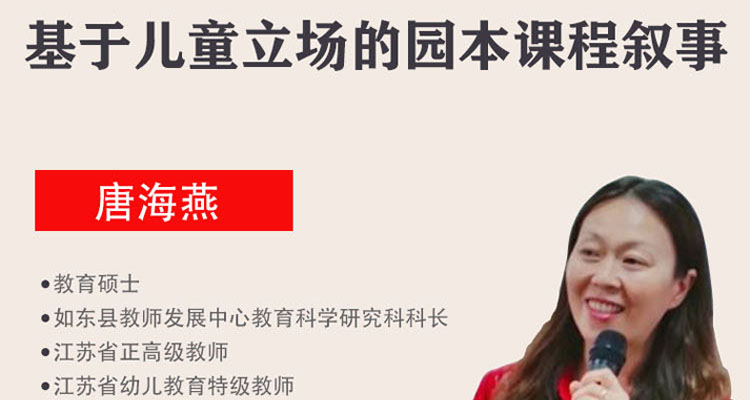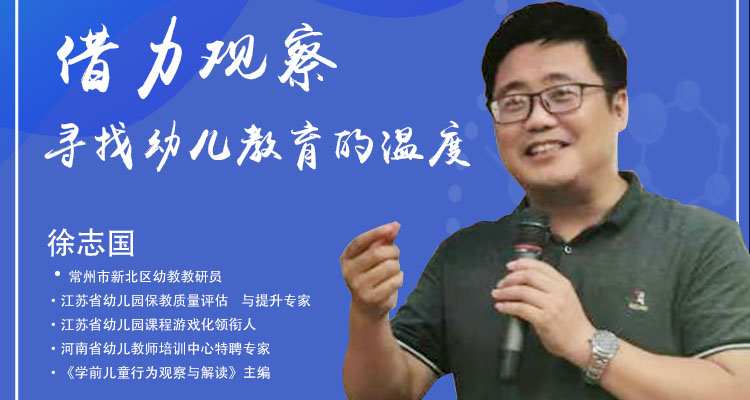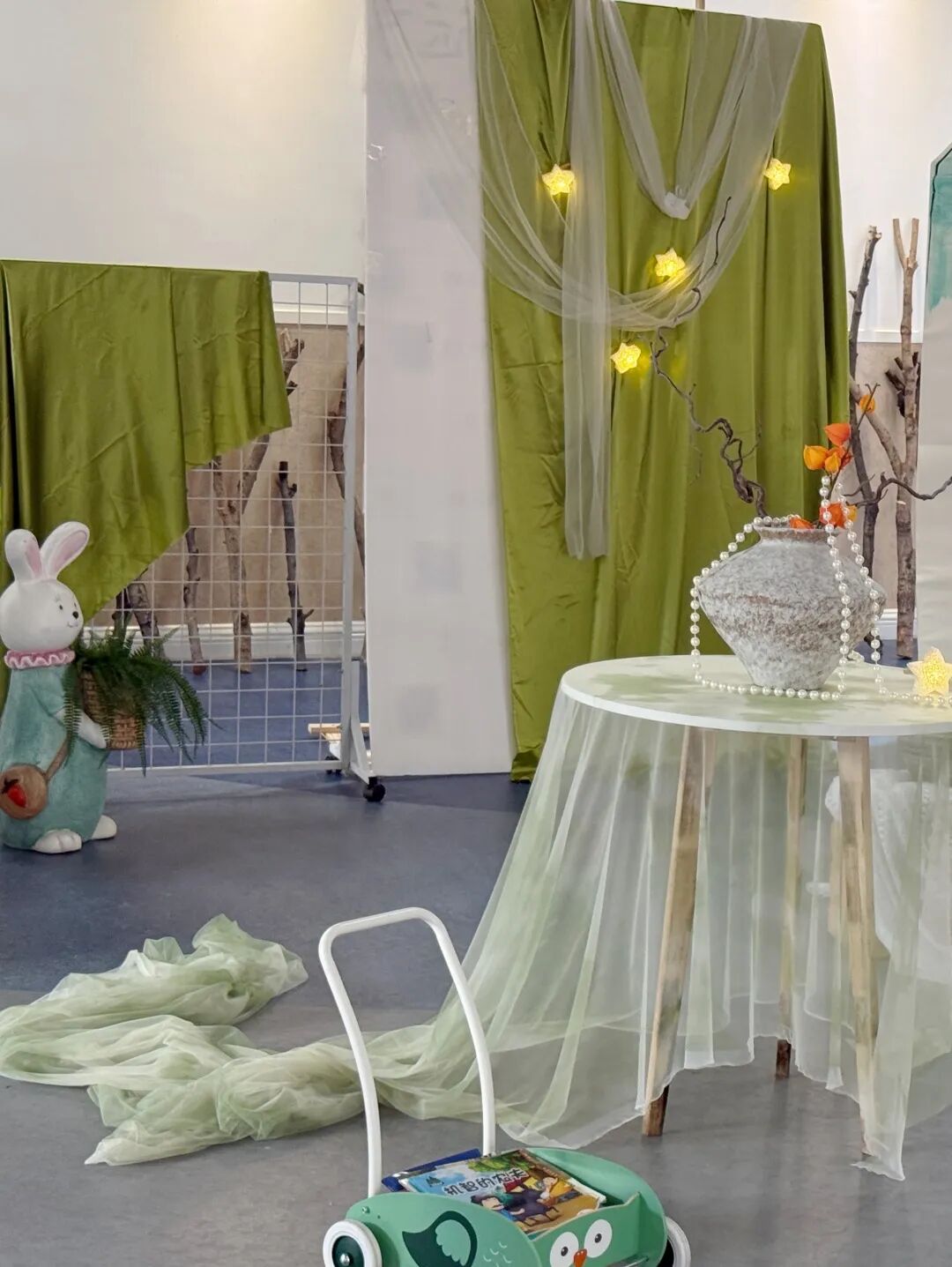“我好像是一个在海边玩耍的孩子,不时为拾到比通常更光滑的石子或更美丽的贝壳而沾沾自喜,尽管如此,那真理的海洋还神秘地展现在我们面前。”
——艾萨克·牛顿
“I do not know what I may appear to the world, but to myself I seem to have been only like a boy playing on the seashore, and diverting myself in now and then finding a smoother pebble or a prettier shell than ordinary, whilst the great ocean of truth lay all undiscovered before me.”
——Isaac Newton
写在前面
时代背景-培养科创人才,建立科技强国
智能时代需要的是运用多学科知识创造性解决问题,拥有科学素养、人文素养和批判性思维的创新人才。
当然,随着脑科学研究的发展,从幼儿到青少年的科学素养培养维度、认知与指导策略将一定会有新的研究成果运用进而指导教育实践。
下面我们走进青浦平和幼儿园的科学探究课,感受教师撒播驱动幼儿深入思考,展开科学探究的种子,了解孩子们生动有趣的有关恐龙探究的故事。
向右滑动,查看英文版本→
Swie left to read English version
The intelligent era requires the creative resolution of problems using multidisciplinary knowledge and the cultivation of innovative talents with a spirit and capacity for scientific literacy, humanistic literacy, and critical thinking.
Of course, with the development of neuroscience research, there will undoubtedly be new research findings applied to guide educational practices in the dimensions of cultivating scientific literacy from early childhood to adolescence, including cognition and instructional strategies.
Now, let’s shift our focus to the science exploration class at SPKQ,, experiencing how teachers sow the seeds of scientific exploration to drive children to think deeply and unfold the exploration of dinosaur. We will learn about the lively and interesting stories of dinosaur exploration by the children.
←向左滑动,查看中文版本
Swie right to read Chinese version
科探之恐龙世界
遇见恐龙,揭开远古生物的神秘面纱
恐龙世界,一个神秘的领域,蕴藏着数百万年的秘密和奥秘。在这片远古的土地上,脚印、化石和故事等待着我们来探索。根据孩子们的好奇心和对探究未知世界的渴望,本学期我们开始了一段对原始生命的探索之旅,让我们用探险的心态和探索的眼光,踏上这段时空之旅,感受远古生物的存在,探寻那些隐藏在岁月长河中的故事。在这片未知之地,我们将了解生命的演化、地球的变迁,与恐龙一同回到时光的长河中,领略那些被时间封存的神秘景象。
Dinosaur World, a realm of mystery, harbors secrets and enigmas spanning millions of years. In this ancient land, footprints, fossils, and tales await our exploration. Fueled by children’s curiosity and their desire to delve into the unknown, this semester embarked on a journey to explore primitive life. With an adventurous mindset and an exploratory outlook, we embarked on this journey through time and space, experiencing the existence of ancient creatures and uncovering stories hidden within the river of time. In this unknown territory, we unravel the evolution of life, the transformations of the Earth, and journey alongside dinosaurs, witnessing the mysterious spectacles preserved by time.
主题起源
一天,在科探日常教学活动中,我收到了这样的一个问题:
恐龙为什么不吃大便?
我很好奇为什么这个小朋友会有这样的问题,于是便试着了解他的想法。原来在这着看似天马行空的问题下,隐藏着孩子对生活经验的观察与思考,因为他发现有的犬类有时会有舔食粪便的行为。其实经常会听到孩子们对恐龙世界的好奇,无论是步履蹒跚的托班小可爱还是大班的自信小少年,似乎恐龙世界有一种神秘力量,让孩子们神往不已。于是我试着收集和整理了孩子们关于恐龙的问题,之后便开始了这段恐龙探索的旅程。
向右滑动,查看英文版本→
Swie left to read English version
One day during our routine scientific exploration, I received an intriguing question:
“Why don’t dinosaurs eat feces?”
Curious about the child’s thought process behind such an imaginative question, I sought to understand their perspective. It turned out that beneath this seemingly whimsical question lay the child’s observations and contemplations on life experiences, noticing that some canines occasionally exhibit coprophagia. Frequently, children exhibit an immense curiosity about the world of dinosaurs, captivating both the toddlers taking their first steps and the confident youngsters in preschool. There seems to be a mystique surrounding the dinosaur world, captivating the imagination of children. Hence, I attempted to collect and organize the children’s inquiries about dinosaurs, leading to the commencement of this journey of dinosaur exploration.
←向左滑动,查看中文版本
Swie right to read Chinese version
恐龙的特征与分类
恐龙的多样性体现在其独特的特征上。孩子们分享了自己了解到的恐龙特征,并通过这些特征来对恐龙进行分类。无论是长尾巴、甲壳还是其他身体特征,都成为他们区分和了解恐龙种类的重要依据。
相较于其他主题,如何深入地探索恐龙对幼儿园的孩子并不是一件容易的事,因为孩子们没有办法通过感官直接获取经验。所以我们购买和收集了大量的恐龙书籍,帮助孩子们认识和了解恐龙。
|
真实档案 |
主要特征: 生活在陆地上; 筑巢、下蛋; 大部分有鳞状皮肤(有些有羽毛); 直立行走,后肢如柱子大型恐龙的颅骨上有开孔,这有助于减轻体重(只有甲龙类的头骨是实心的); 脚趾着地行走; 长尾巴,但尾巴不拖地; 四肢上有爪; |
|
恐龙与现生爬行动物不同的是,它们的四肢可以直立着地,就像哺乳动物那样。有的恐龙用四肢行走,有的只用后肢。 |
|
|
恐龙与现生爬行动物不同的是,它们的四肢可以直立着地,就像哺乳动物那样。有的恐龙用四肢行走,有的只用后肢。 |
|
|
而有些用四肢和后肢都可以行走。 恐龙——用后肢直立行走。 鳄鱼——肘膝弯曲行走。 蜥蜴——行走时四肢与身体成直角。 |
向右滑动,查看英文版本→
Swie left to read English version
Dinosaurs exhibit a diverse range of features that are crucial for their classification. Children share their understanding of dinosaur characteristics, using these features to categorize them. Whether it’s long tails, armor, or other physical traits, these features become important criteria for children to differentiate and understand various dinosaur species.
Compared to other topics, exploring dinosaurs in-depth with kindergarten children is not an easy task as they cannot directly experience it through their senses. Therefore, we have purchased and collected numerous dinosaur books to help children become acquainted with and comprehend dinosaurs.
|
Real Profile |
Terrestrial habitat Nest building and egg-laying Mostly covered in scaly skin (some have feathers) Bipedal locomotion with pillar-like hind limbs Many large dinosaurs have openings in their skull to reduce weight (except for some armored dinosaurs with solid skulls) Walking on tiptoes |
|
Long tails that do not drag on the ground Claws on four limbs |
|
|
Dinosaurs, unlike modern reptiles, can stand upright on their limbs, similar to mammals. Some dinosaurs walk on all fours, while others use only their hind limbs. Some dinosaurs can walk on both their front and hind limbs. |
|
|
Dinosaurs – Walk upright on hind limbs. Crocodiles – Walk with bent elbows and knees. Lizards – Walk with limbs forming a right angle to the body. |
←向左滑动,查看中文版本
Swie right to read Chinese version
测量、比较——深入了解恐龙的大小
具体形象思维是幼儿园孩子思维发展的主要方式,也就是说,孩子们对事物的认知和理解主要来源于其在生活中的认知与经验。为了帮助孩子们获取恐龙身体大小的直接经验,我们复原了恐龙的巨大身躯,通过拼、测量恐龙的脚印和用1:1的比例复原三角龙的身体轮廓,帮助孩子们更加直观地感受这些巨兽的真实体型。
▲利用可利用的材料,孩子们讨论测量恐龙脚印的办法。
▲他们对如何计算大小问题,提出了各种方法观点。
《指南》中将数学纳入了科学领域,科学中运用到很多数学的知识和方法。马克思曾说:“一种科学只有在成功运用数学时,才算达到了真正的完善的地步。印度科学博士,水利专家拉奥(K.L.Rao)说:“ 一个国家的科学水平可以用它消耗的数学来度量。” 下面我们看看孩子们在恐龙的科学探究中是如何“消耗”数学思维和方法的。
把统计引入对恐龙的探究中,通过对三角龙、霸王龙、剑龙、甲龙、巨兽龙等恐龙的大小进行统计和比较以及结合用简单的统计图表呈现这些恐龙的体长,帮助孩子们理解这些古老生物体型的差异。
向右滑动,查看英文版本→
Swie left to read English version
Measurement and Comparison – In-Depth Understanding of Dinosaur Sizes
Concrete and visual thinking are the primary ways in which kindergarten children develop their cognitive abilities. This means their understanding and cognition of things primarily stem from their experiences in life. To help children grasp the actual size of dinosaurs, we reconstructed the colossal bodies of dinosaurs. We engaged them in puzzles, measured dinosaur footprints, and recreated the body outline of a Triceratops in a 1:1 scale, enabling the children to tangibly experience the true size of these colossal creatures.
▲利用可利用的材料,孩子们讨论测量恐龙脚印的办法。
▲他们对如何计算大小问题,提出了各种方法观点。
The inclusion of mathematics in the scientific domain is emphasized in the guiding outline of China’s preschool education document, “《3-6岁儿童学习与发展指南》” Many scientific applications involve a significant amount of mathematical knowledge and methods. As Karl Marx once said, “A science is only perfected when it successfully applies mathematics.” The Indian scientist and hydraulic expert, K.L. Rao, stated, “The scientific level of a country can be measured by the mathematics it consumes.” Now, let’s explore how children “consume” mathematical thinking and methods in their scientific exploration of dinosaurs.
Introducing statistics into our exploration of dinosaurs, we compared and measured the sizes of dinosaurs like Triceratops, Tyrannosaurus Rex, Stegosaurus, Ankylosaurus, and Brachiosaurus. Utilizing simple statistical charts, we presented these dinosaurs’ body lengths, aiding the children in understanding the differences in the sizes of these ancient creatures.
←向左滑动,查看中文版本
Swie right to read Chinese version
材料与空间的探索
早在探究恐龙之前,孩子们就对恐龙时代的地球充满了浓厚的兴趣,随着对恐龙探究活动的展开,孩子们的这一兴趣变得愈发浓烈。借助书籍和智能AI,孩子们了解了恐龙时代地球的环境,以及从三叠纪到白垩纪晚期地球的温度、植被等环境的变化。
在科学领域,幼儿习惯于用具体的材料开始他们对空间的认识,这些探索可以帮助他们抽象思维的建构。根据对中生代地球环境的认识,孩子们用自然材料和超轻粘土制作了恐龙的家。这个过程让我们更好地理解了恐龙生活的环境,而制作微生态则进一步将我们带入了远古时代的神秘景象。
向右滑动,查看英文版本→
Swie left to read English version
“Exploration of Materials and Space”
Even before diving into the exploration of dinosaurs, children harbored a profound interest in the Earth during the dinosaur era. As our exploration of dinosaurs unfolded, this interest among children intensified. Leveraging books and intelligent AI, children learned about the environment of the Earth during the dinosaur era, encompassing the changes in temperature, vegetation, and other environmental factors from the Triassic to the late Cretaceous period.
In the field of science, children are accustomed to initiating their spatial awareness through tangible materials, which aids in the construction of their abstract thinking. Based on their understanding of the Mesozoic Earth’s environment, children crafted dinosaur habitats using natural materials and ultra-light clay. This process facilitated a better understanding of the environment in which dinosaurs lived, while creating micro-ecosystems further immersed us in the mysterious landscapes of ancient times.
←向左滑动,查看中文版本
Swie right to read Chinese version
科学实验-恐龙灭绝的探索
恐龙的灭绝是探究恐龙世界时绕不开的话题,对恐龙感兴趣的孩子在很小的时候就已经能对恐龙灭绝的原因说得头头是道。借助Chatgpt,孩子们了解了恐龙灭绝的一些可能性,以及火山爆发在其中扮演的角色。通过模拟火山爆发的实验,我们了解了锥状火山与盾状火山在形成过程中的差异,体验了这一自然灾害的威力。
模拟火山形成的实验,孩子们发现在同样的平面上,黏稠度高的溶液比黏稠度低的溶液流得距离短,这可以帮助他们理解岩浆的黏稠度对一些火山形态的决定作用。
向右滑动,查看英文版本→
Swie left to read English version
The extinction of dinosaurs is an unavoidable topic when exploring the world of dinosaurs. Children interested in dinosaurs can articulate the reasons for dinosaur extinction at a very young age. With the help of ChatGPT, children have gained insights into various possibilities surrounding the extinction of dinosaurs, including the role played by volcanic eruptions. Through simulating volcanic eruptions in experiments, we have explored the differences in the formation processes of cone-shaped and shield volcanoes, experiencing the power of this natural disaster.
In a simulated experiment on volcanic formation, children observed that on the same plane, a solution with higher viscosity flowed a shorter distance compared to a solution with lower viscosity. This finding helps them understand the influence of magma viscosity on the determination of certain volcanic morphologies.
←向左滑动,查看中文版本
Swie right to read Chinese version
感受历史文化的价值-探究恐龙化石
通过寻找化石来接触恐龙时代的痕迹。认识化石,了解它们形成的过程,并体验挖掘化石的乐趣。这个过程让我们更贴近远古生物的存在,并感受到时间的长河中留存下来的痕迹。
向右滑动,查看英文版本→
Swie left to read English version
“Fall in Love with Science, Cultivate an Emotional Connection to Science.”
We delved into the traces of the dinosaur era by searching for fossils. Understanding the formation process of fossils and experiencing the joy of excavating fossils brought us closer to the existence of ancient creatures. This process allowed us to connect more intimately with the remnants left behind in the river of time.
←向左滑动,查看中文版本
Swie right to read Chinese version
科学活动-恐龙蛋体验
恐龙带给我们的惊喜远不止于此,从了解恐龙的繁殖方式延伸出胎生动物,卵生动物、哺乳动物、爬行动物、两栖动物,孩子们在探索这些科学概念的同时,也深深感受着生物的多样性与大自然的神奇。
向右滑动,查看英文版本→
Swie left to read English version
The surprises brought to us by dinosaurs go far beyond their physical characteristics. Exploring the reproductive methods of dinosaurs extends to viviparous animals, oviparous animals, mammals, reptiles, amphibians, and more. As children delve into these scientific concepts, they also profoundly experience the diversity of life and the wonders of nature.
←向左滑动,查看中文版本
Swie right to read Chinese version
▲孩子们正在制作属于自己的恐龙蛋
兴趣驱动下的解决问题与挑战1
——解救小恐龙
在一个情境为“受困的小恐龙”的活动中,孩子们踊跃地分享着解救小恐龙的方法,并与同伴合作,都在为小恐龙能够脱困竭尽所能。
孩子们纷纷提出解决问题的办法,并根据自己提出的方法,分组归队展开实验。有的提出用工具凿开,有的提出用火山爆发的实验材料划开,有的提出加热化开,还有的提出用吹风机吹化了。在安全的情况下,教师允许他们根据自己的假设去操作,并进行方法的对比和讨论。
向右滑动,查看英文版本→
Swie left to read English version
Constructive Thinking to Solve Problems and Challenges
In an activity centered around the scenario of a “trapped little dinosaur,” children enthusiastically share methods to rescue the small dinosaur. Collaborating with their peers, they all work together, doing their utmost to free the little dinosaur from its predicament.
The children are coming up with various solutions to solve the problem, and based on their suggested methods, they are forming groups to conduct experiments. Some suggest using tools to chisel open, others propose using materials simulating a volcanic eruption to dissect the dinosaur eggs, some suggest heating to dissolve, and there are those who propose using a hairdryer to blow at the dinosaur eggs, melting the outer layer of ice. With safety ensured, the teacher allows them to operate according to their hypotheses and encourages the comparison and discussion of methods.
←向左滑动,查看中文版本
Swie right to read Chinese version
兴趣驱动下的解决问题与挑战2
——了解科技信息和材料,克隆小恐龙
在幼儿园科学教育中,对材料的探索也是科学探究课程的重要部分,为孩子创造条件去认识和使用各种材料的过程就是让孩子认识世界的过程,也能够培养孩子对生活的热爱。基于之前孩子们对化石的认识,我们使用了模型粉和石膏粉来制作恐龙化石。孩子们认识了这两种特殊的材料,并在加水、搅拌、凝固的过程中了解了它们的不同特性。
这次的旅程让我们穿越时空,更深入地了解了恐龙的世界和它们在地球上的生存环境。通过观察、实验和创造,我们更全面地认识了这些神秘而古老的生物,也更深刻地理解了它们在地球历史长河中的独特意义。更重要的是,在这个过程中,孩子们对科学世界的兴趣进一步被催化,孩子们主动探究,通过自己的思考、体验和解决问题的过程来建构新的知识,更懂得了尊重他人与相互合作。
向右滑动,查看英文版本→
Swie left to read English version
In kindergarten science education, exploring materials is an essential part of the scientific inquiry curriculum. Creating opportunities for children to understand and use various materials is a process of helping them explore and discover the world, fostering their love for life. Building on the children’s previous knowledge of fossils, we utilized modeling clay and plaster powder to create dinosaur fossils.
This activity allowed the children to become acquainted with these two unique materials. Through the processes of adding water, stirring, and solidification, the children gained insights into the distinct characteristics of modeling clay and plaster powder. Engaging in this hands-on experience not only deepened their understanding of materials but also provided a practical context for them to apply their knowledge. Additionally, the activity encouraged a sense of curiosity and appreciation for the world around them, contributing to the development of a lifelong love for learning.
This journey has taken us on a time-traveling adventure, allowing us to delve even deeper into the world of dinosaurs and their survival environments on Earth. Through observation, experimentation, and creativity, we have gained a more comprehensive understanding of these mysterious and ancient creatures. Additionally, we have developed a profound insight into their unique significance in the vast history of our planet.Most importantly, throughout this process, the children’s interest in the world of science has been further ignited. They have taken the initiative to explore, constructing new knowledge through their own thoughts, experiences, and problem-solving endeavors. This journey has also instilled in them a deeper appreciation for respecting others and engaging in mutual cooperation.
←向左滑动,查看中文版本
Swie right to read Chinese version
教
师
笔
记
科学活动的重要价值之一就是保护和激发幼儿的好奇心,在科学方法运用和能力锻炼中,培养幼儿的创新习惯和科学探究精神。
Teacher’s Note: One of the crucial values of scientific activities is to protect and ignite the curiosity of young children. Through the application of scientific methods and the development of skills, we aim to cultivate innovative habits and a spirit of scientific exploration in the children.
饱有探索未知的好奇心和热情,富有敏锐的观察力和思考力-创新从不缺席
Full of curiosity and enthusiasm to explore the unknown, coupled with keen observational and thinking skills – innovation is always present.
1796年,英国乡村医生爱德华·琴纳(Edward Jenner,1749-1823)开始尝试牛痘接种,借助牛痘,人类最终从地球上消灭了天花。他通过观察发现挤牛奶和送牛奶的人一个都没有得天花病,就联系到天花病一定与牛有关,就在动物身上做了无数次的接种试验,来探索天花病的奥秘。由于琴纳发明了牛痘疫苗和进行人工接种,使人体获得了免疫力,制服了天花病,挽救了无数人的生命,打开了免疫学的大门,为免疫学奠定了基础。
具有敏锐的好奇心、深刻的观察思考力以及灵活多变的头脑,是未来创新人才应当具备的基本素质和特点。
In 1796, the British country doctor Edward Jenner (1749-1823) began experimenting with cowpox vaccination. With the help of cowpox, humanity eventually eradicated smallpox from the Earth. Through observation, Jenner noticed that people involved in milking cows and delivering milk never contracted smallpox. He connected smallpox to cows and conducted numerous vaccination experiments on animals to explore the mystery of smallpox. Thanks to Jenner’s invention of the cowpox vaccine and the practice of artificial inoculation, the human body gained immunity, defeating smallpox, saving countless lives, and opening the doors to immunology, laying the foundation for the field.
Having a keen curiosity, profound observational thinking skills, and a flexible and adaptable mind are fundamental qualities and characteristics that future innovative talents should possess.
课程思考在路上
期望每一个种子都用向阳而生的热情破土而出、
追光而行
著名学者林格在《教育的根本》一书中提到,教育比作一棵树,对一棵大树来说,根扎得牢固才能枝繁叶茂。
我们要重视孩子的底层能力培养。培养孩子提问、讨论、合作解决问题等创新习惯,好奇好问好探索的钻研精神是重要的底层能力之一。
孩子们在本次活动中,锻炼了观察、比较、分析、调查、联系、推断、验证、收集信息、实验预测等探究方法的实践运用,同时在小组合作中发展了观点采纳和判断思考力,以浓厚的兴趣投入到研究任务中。而这一饱含好奇心和热情的探究精神,是学前儿童重要的科学素养教育目标之一。是否孩子们还会对恐龙DNA重组产生浓厚兴趣呢?小小科学家们又将开启哪些富有挑战的研究项目呢?在每一天的新鲜体验中,静静等待惊喜出现…..
向右滑动,查看英文版本→
Swie left to read English version
“When we appreciate a child, marvel at her happiness and achievements, it means that 7/8 of everything has been laid as a foundation before her accomplishments, much like a big tree. When we admire it, we should see how deep and far its roots are planted.” – Dr. Wang Zhanbao, Ph.D. in Sociology of Education, Nanjing Normal University. “Cultivating habits of innovation, such as questioning, discussing, and collaboratively solving problems, as well as fostering a spirit of curiosity, asking good questions, and exploration from an early age, is one of the essential foundational abilities.”
In this activity, children have exercised the practical application of inquiry methods such as observation, comparison, analysis, investigation, connection, inference, validation, information collection, experimental prediction, and more. Simultaneously, through group cooperation, they have developed the ability to select viewpoints and engage in critical thinking, witnessing the children’s strong interest and commitment to the research tasks. This spirit of inquiry, filled with curiosity and enthusiasm, is one of the crucial goals of science education for preschool children. Will the children continue to show a strong interest in the recombination of dinosaur DNA? What challenging research projects will our little scientists embark on? In the joyful and inspiring moments of each beautiful day, quietly waiting for surprises to unfold……
←向左滑动,查看中文版本
Swie right to read Chinese version
文章转载自微信公众号:上海青浦平和幼儿园

请关注公众号,发送"解锁码"获取验证码










